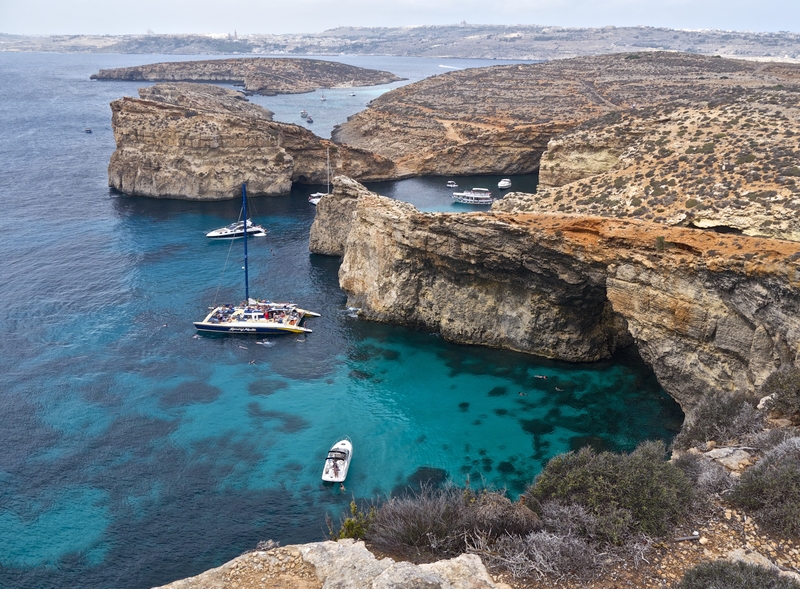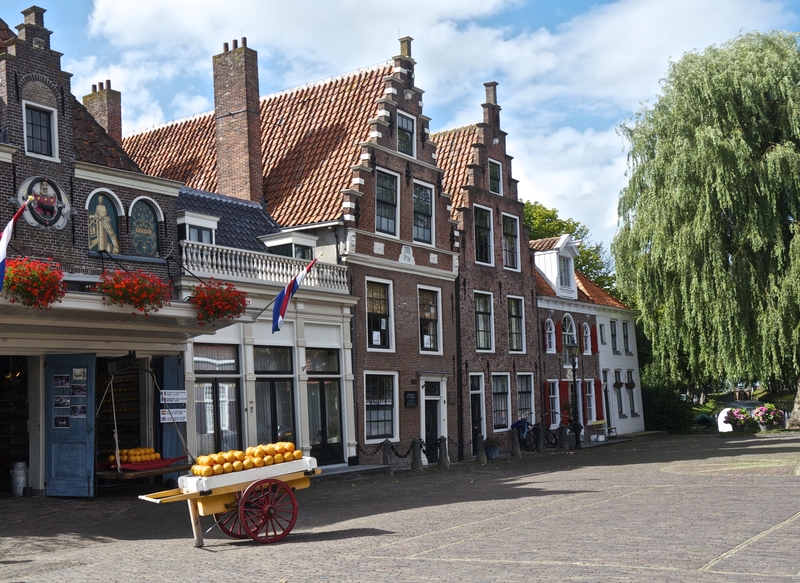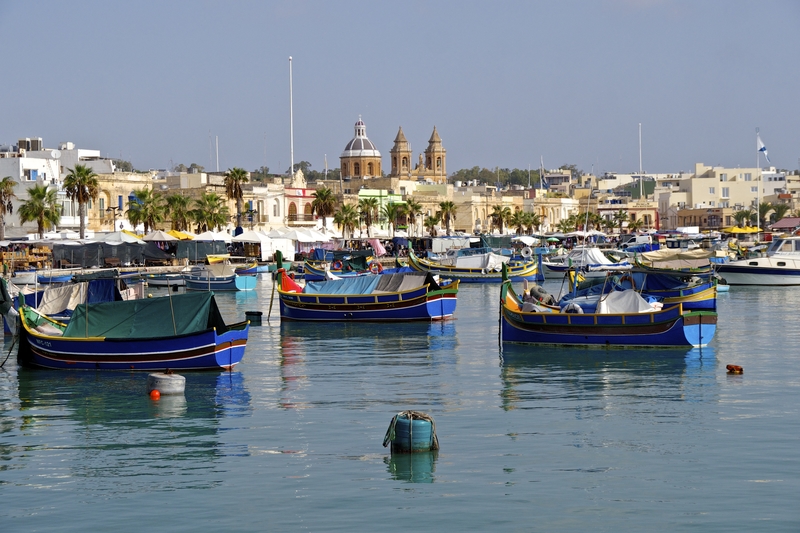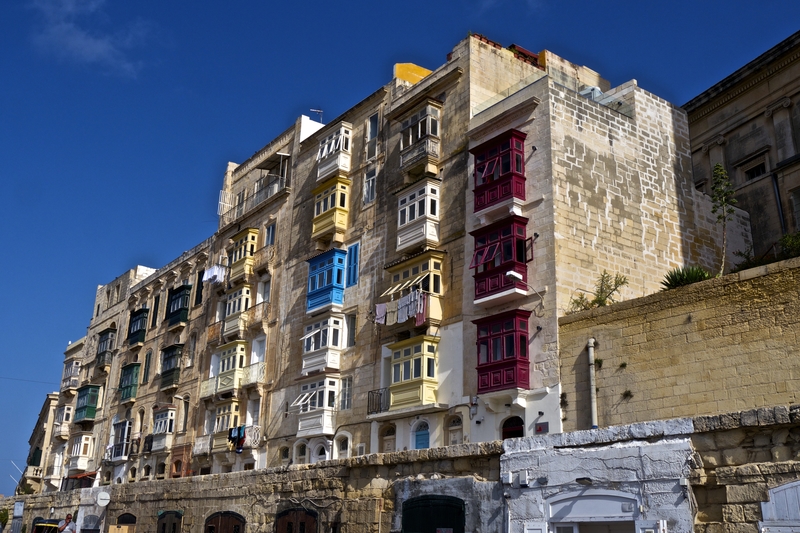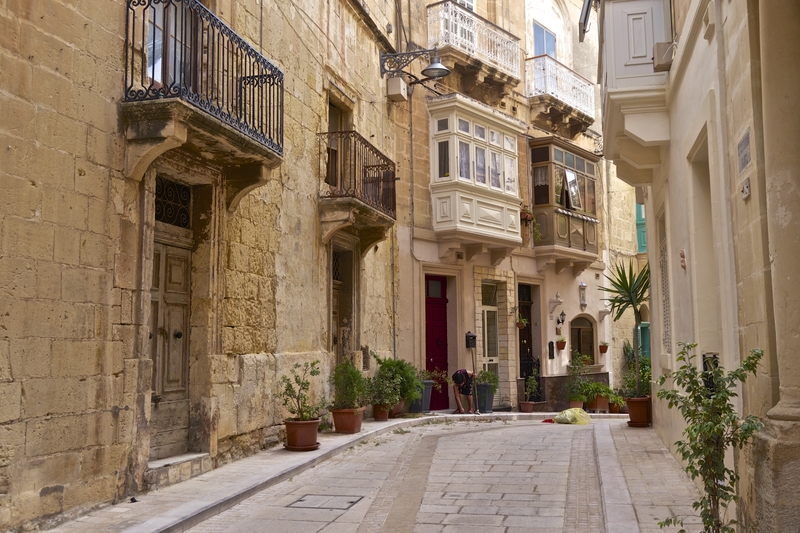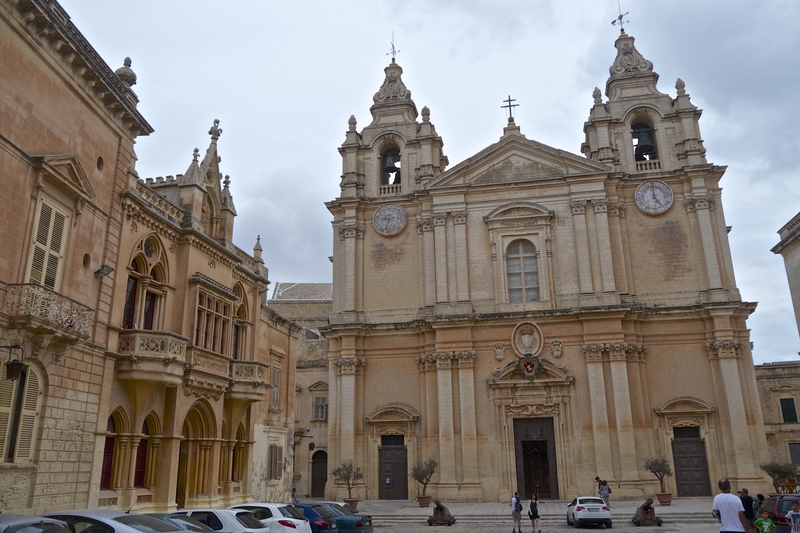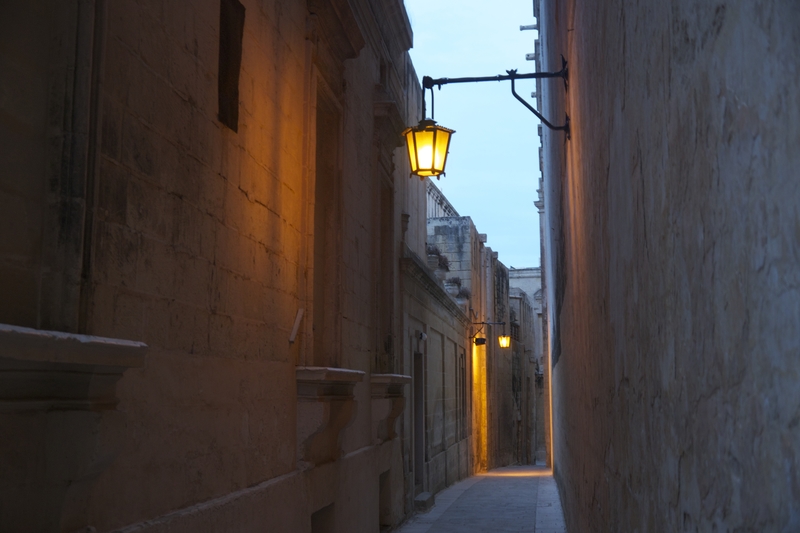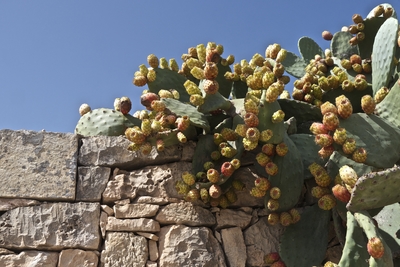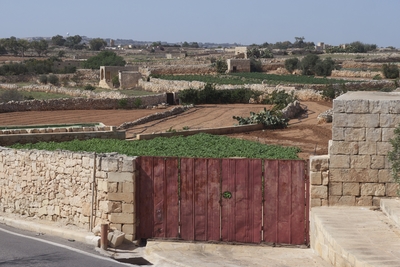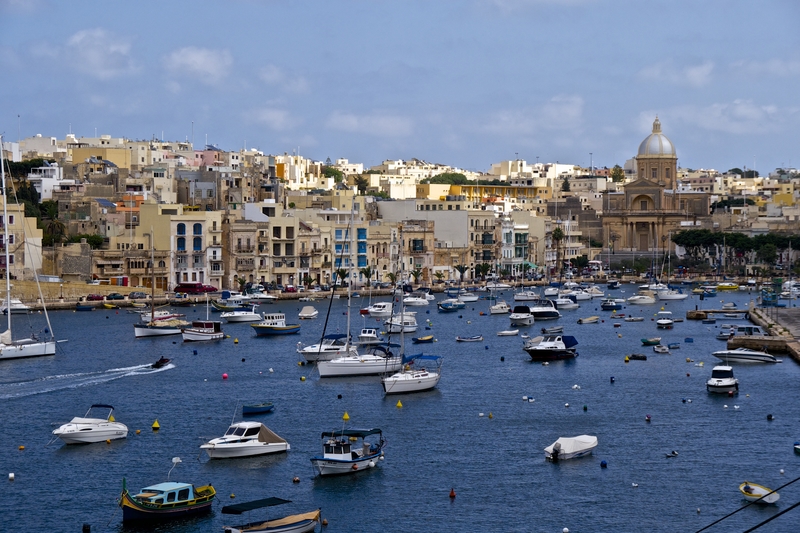
Exploring the Best of Malta: A Three Day Itinerary
Though Malta is still relatively unknown to many North American travelers, the archipelago nation is quickly becoming a tourist favorite among Europeans. And there are many reasons for this: the beautiful landscapes, the sapphire waters, the unique rock formations, the heritage, the culture, the history.
History is everywhere you look in Malta. It oozes from the towering cathedrals that dominate the country’s landscapes. It lies hidden away in the narrow streets and alleyways of the island’s postcard-perfect cities. And it is embedded in the complex fabric of Malta’s language, its architecture and its identity. F
rom the long legacy of the Knights of St John to the existence of temples that predate the Egyptian Pyramids, Malta is a fascinating, complex and multifaceted country that packs a lot of punch into its tiny size.
Itinerary for 3 Days in Malta
Malta remains largely off the trodden tourist trail. Yet, with its dramatic coastal scenery and regal fortified cities, the small Mediterranean island is overflowing with things to see.
I spent five days backpacking around the Maltese islands at the end of September. Of those five days, I spent three on the main island of Malta-–discovering the island’s dizzying display of natural attractions, picturesque cities and, and archeological wonders.
My three day Malta itinerary consisted of visiting many of the island’s top attractions. It brought me to beautiful cities, ancient historical relics, and dazzling natural attractions.
Malta’s position at the crossroads of Europe and the Maghreb, has fostered a beautiful blend of Italy meets Middle East—a melange of linguistic, cultural and architectural elements that entwine to create an island that is as unique as it is beautiful.
Malta Itinerary Day 1: Valletta
Like most tourists to the country, I based my travels in the sprawling town of St Julian’s, across the bay from Valletta. I stayed at the Boho Hostel—a budget-friendly backpacker’s retreat that is just a stone’s throw away from the city’s waterfront promenade. The relaxed and chilled-out vibe at Boho was perfect for unwinding after long days of crisscrossing the tiny island nation on public buses.
On the first day of my Malta itinerary, I explored the neighborhood of St Julian’s and the beautiful UNESCO-recognized city of Valletta.
-
St Julian’s
St Julian’s was once a pretty fishing village located across the bay from the Maltese capital. But rapid growth has transformed the neighborhood into a trendy area where five-star hotels and apartment complexes abound. The neighborhood of St Julian’s adjoins the small nightlife enclave of Paceville.
The adjacent neighborhood of Sliema lies just across the bay from Valletta and is connected to the Maltese capital by a ferry that runs on the half hour.
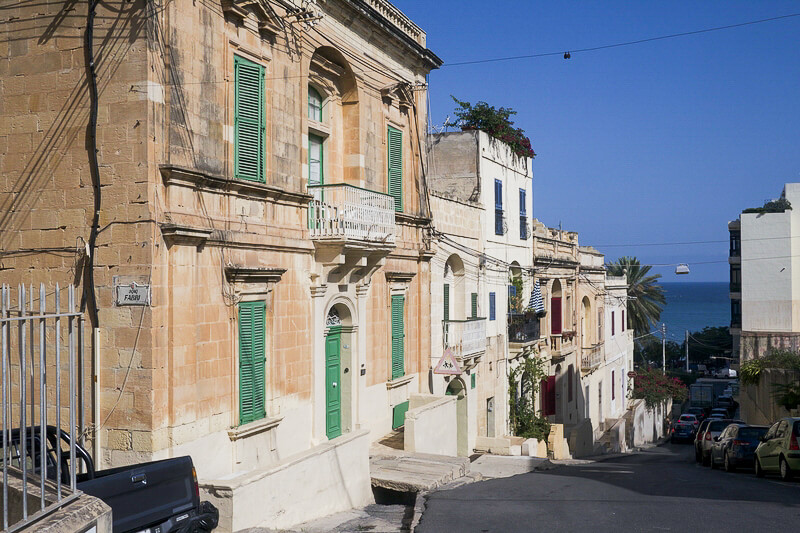
Though St Julian’s picturesque beauty does not rival that of Valletta, the area’s assortment of hotels and eateries makes it a fantastic base for exploring the island.
-
Valletta
Valletta is Malta’s largest and most visually striking city. Deemed “a city built by gentlemen for gentlemen” upon its founding, Valletta is full of 16th-century elegance and grace.
Malta’s romantic and picturesque capital city is characterized by brightly colored balconies, narrow alleyways and domed cupolas. Squished between two Mediterranean bays, Valletta enjoys stunning views of Sliema to the North, the Three Cities of Birgu, Sanglea and Cospicua to the South, and the sparkling cobalt sea to the East.
When UNESCO designated Valletta a World Heritage Site, the organization described the city as one of the most concentrated historic areas in the world.
Though Valletta can rival just about any other city in terms of its history and wealth of attractions, it is not a typical European capital. Valletta is everything most capital cities are not. It is quaint, easily walkable and traffic-free.
Within Valletta’s fortified walls, there are no skyscrapers, congested streets or sprawling neighborhoods. Instead, the city is home to pedestrian arteries, restaurants offering traditional rabbit stew and lively squares filled with a mix of tourists and locals enjoying the laid-back vibe of one of Europe’s most unique and visually-pleasing capitals.
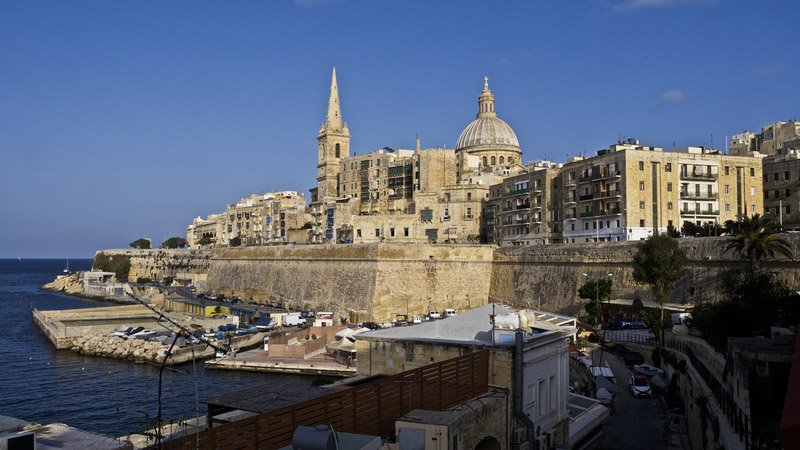
I spent nearly the entirety of my first day in Malta exploring the cathedrals, forts and twisting streets of Valletta.
In that time, I visited the Co-Cathedral of St John, strolled through the Upper Barakka Gardens, and soaked in views of the city’s pictureque skyline from its waterfront.
DAY 2: Malta’s Beautiful Cities
Though the striking capital city of Valletta gets much of the limelight, Malta’s other fortified cities are certainly worth visiting. On my second day in Malta, I visited these pretty cities by bus. My itinerary brought me first to the three cities of Birgu, Sanglea and Cospicua.
-
The Three Cities
The Three Cities of Malta offer an intriguing insight in the island’s history. Left largely unvisited, these fortified cities offer a glimpse into Malta’s maritime fortunes.
Though I walked around all three cities during my second day in Malta, I spent the majority of my time in the picturesque waterfront city of Birgu.
Birgu (also known as Vittoriosa) was the first home of the Knights Hospitaller, a Catholic military order that ruled over Malta from 1530 to 1798.
Birgu sits across the bay from Valletta and is one of the most beautiful cities in Malta. Its sapphire waters are dotted with sailing vessels and painted fishing boats.
With the city’s streets to myself, I spent two hours wandering the skinny lanes of Birgu. Along my walk, I admired the views of the surrounding harbor and stopped frequently to fill up on delicious pastizzis. The city’s flower-bedecked streets, its decorated balconies, and its sand-colored buildings are both regal and charming.
With each turn I took, I found myself getting more and more lost in the maze of golden buildings and elaborate balconies.
From Birgu, I hopped back on the bus and made my way around the harbor to Valleta.
-
Mdina: The Silent City
The mysterious gold-stone city of Mdina sits smack in the middle of the country and affords breathtaking views of the island’s arid terrain from its fortified walls. Deemed Malta’s Silent City, Mdina is characterized by shaded alleyways, arched doorways exquisite balconies and the beautiful St Paul’s Cathedral that towers over the city’s maze of golden buildings.
I wandered the streets of Malta at dusk–as the day-trippers emptied from Mdina’s alleyways and headed back to their hotels in St Julian’s and Valletta. As the sun set, it became easy to see why Mdina has been deemed the Silent City. The city’s peaceful streets were eerily deserted.
Itinerary Day 3: Southern Malta
Malta is densely packed and covered in a blanket of urban sprawl. But on the southern part of the island, I was able to escape the crowds for a bit of solitude.
I found the sparsely populated pockets of the country to be beautiful in their harshness. Prickly pear cactuses scramble up the sides of stone fences and a patchwork of earthy tones extends outward, as far as the eye can see.
It is in southern Malta that I was able to delve into the island’s past and discover the legacies of its ancient civilizations. It is in this region that I was able to enjoy the country’s rural heart, away from the crowds. And it is in this region that I found a microcosm of everything that makes Malta so special—picturesque villages, rugged nature, awe-inspiring ocean views and a complex, multifaceted history.
-
Marxaslokk Fishing Village
I began my visit to southern Malta by taking bus 81 to Marxaslokk from Valletta’s main station. An essential stop in any Malta itinerary, Marxaslokk is a quaint and colorful fishing village characterized by its picturesque harbor. In the Marxaslokk Harbor, traditional boats bob up and down, creating a colorful contrast to the city’s golden buildings. These cheery boats are known locally as luzzus and are painted in bright, primary colors. Each boat is decorated with eyes that are said to protect the fishermen at sea.
Every Sunday, the whole population of Malta seems to flock to Marxaslokk to attend the fish market–a weekly affair featuring everything from swordfish to sea bream to rockfish to clams.
I shoved through the crowds and took a peek at the market’s offerings, before sitting down on one of the harbor’s protruding docks. From my spot on the dock, I watched the hurried frenzy of market-goers and admired the surrounding jumble of brightly colored fishing boats.
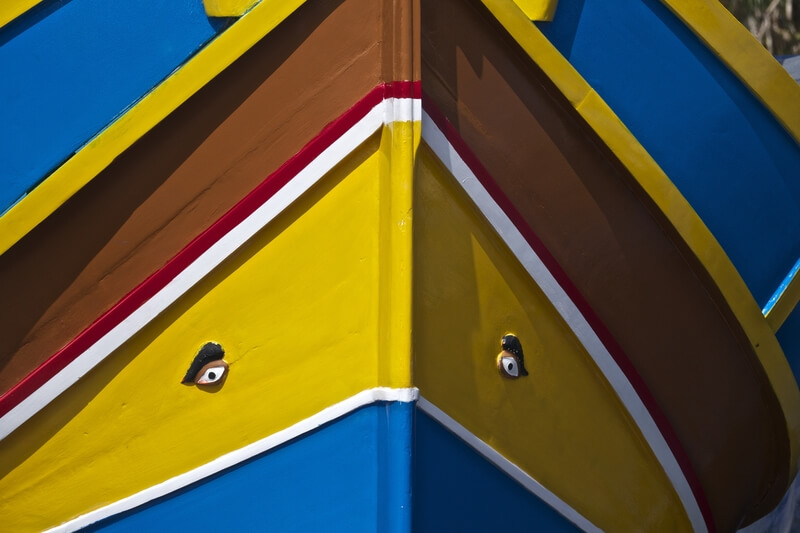
Heeding the advice I received at my hostel in St Julian’s, I decided to follow my visit to the Marxaslokk fish market with a quick dip in St Peter’s Pool–a nearby swimming hole that is a favorite among locals.
-
St Peter’s Pool
From the town’s harbor, I followed signs to the swimming hole. It was not until I was ready to plunge into the water, that I realized I had forgotten to bring swimwear. So, after cooling off in the shade for a bit, I continued on, toward Malta’s megalithic temples.
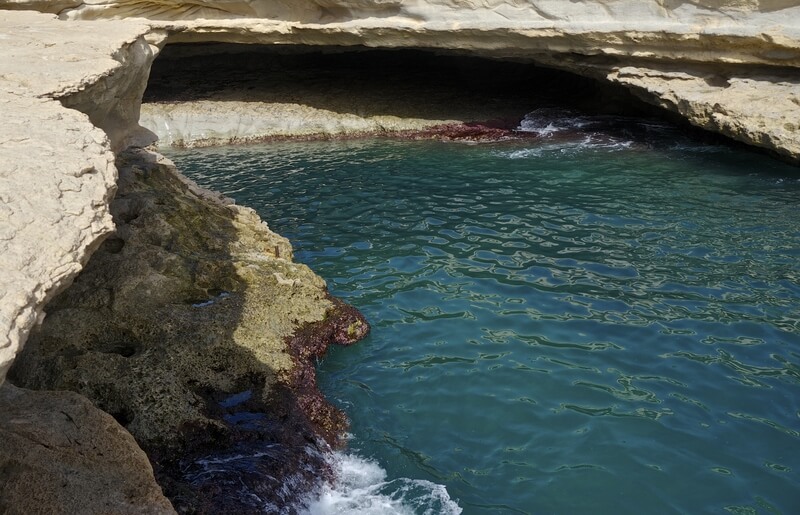
-
The Megalithic Temples of Malta
Since there is no direct bus from Marxaslokk to the megalithic temples, I took bus 210 to Xwendi, followed by bus 72 to Qrendi. From Qrendi, I walked the remaining half hour to the temple complex–relishing the views of rural Malta along the way.
I arrived at Malta’s ancient temples in the late afternoon and spent about an hour visiting the two adjacent sites of Hagar Qim and Mnajdra.
Malta’s megalithic temples are old–older than the Pyramids, Stonehenge and the ruins of ancient Rome. And, while today Hagar Qim and Mnajdra may look like little more than piles of rocks, these unassuming structures are among the oldest freestanding buildings in the world.
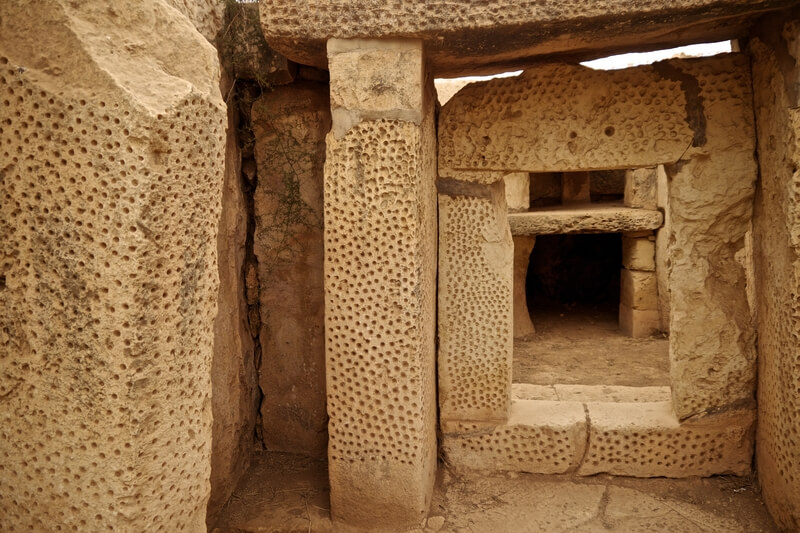
UNESCO has granted Malta’s megalithic temples (Hagar Qim, Mnajdra, Tarxien and Ggantija) status as world heritage sites, for each temple is remarkable in its architectural and technological achievements.
-
The Blue Grotto
Had my day trip to southern Malta gone flawlessly, my visit to the megalithic temples would have been followed by a stop at the Blue Grotto. Yet, a combination of poor planning and a winter reduction in visiting hours meant that I arrived at the site’s ticket booth shortly after it had closed. It was only 3:30pm, but the last boat ride to the caves had already left a few minutes prior.
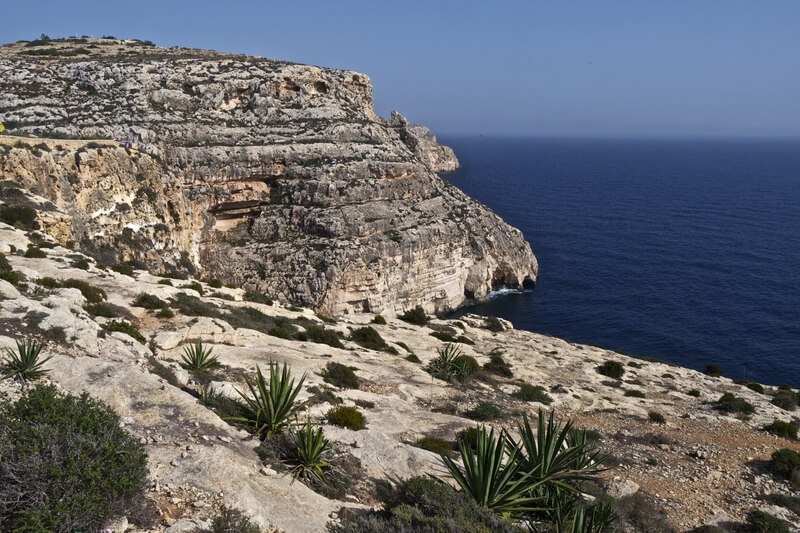
While I am disappointed that I missed out on seeing one of the country’s most famous and beloved natural attractions, I imagine that the Blue Grotto in Malta is similar to the azure cave I saw in Capri.
Best Time to Visit Malta
The European shoulder seasons are the best times to visit Malta. In spring and early summer, temperatures are pleasant and sunny, while crowds remain manageable. As the summer progresses, the days tend to get warmer and warmer. July and August in Malta can be hot and crowded, though the water temperatures can be ideal for swimming.
The months of September and October are wonderful times to visit Malta. In fact, the small European country is one of the best places in Europe to visit in October due to its warm weather and relative lack of rain.
****
The three main islands in the Maltese Archipelago—Malta, Gozo, and Comino—each have their own flavor. Though I took day trips to Gozo and Comino during my five days in Malta, I spent three jam-packed days exploring the best of Malta’s main island.
In three action-packed days, I explored the island’s most beautiful cities, historical sites, and natural attractions. Each destination in Malta presented me with more picture-perfect views than I could capture on camera. Each reveals a small nation steeped in history and tradition.
And each showcases the unique blend of Italy meets Maghreb that makes Malta so special.
